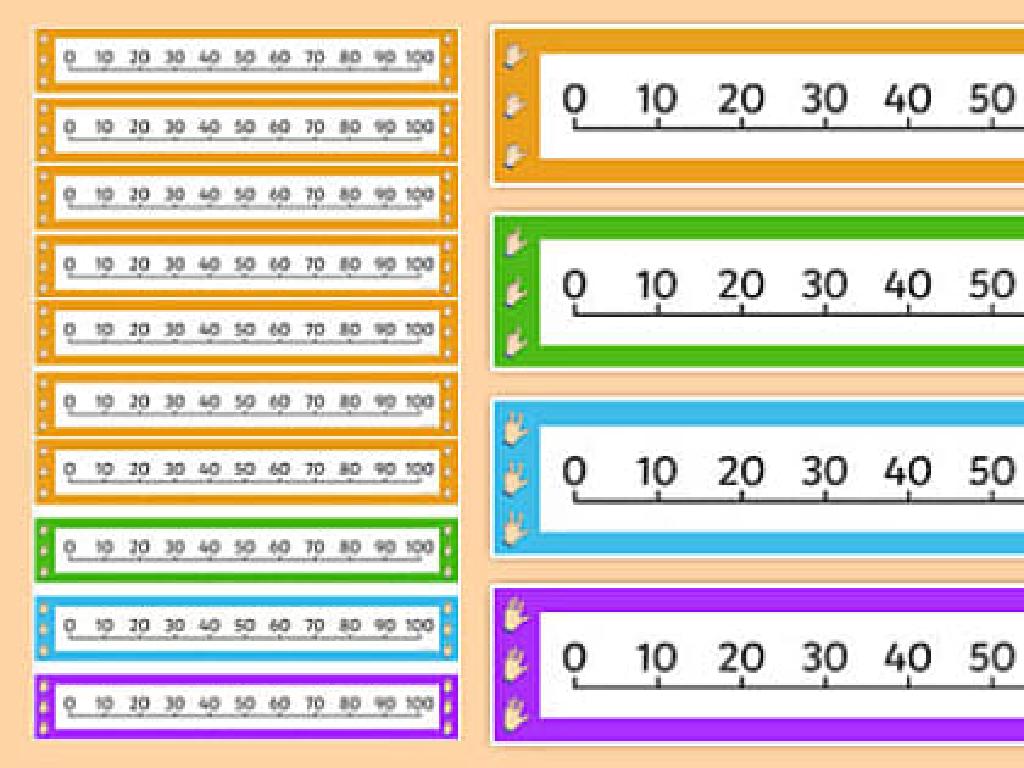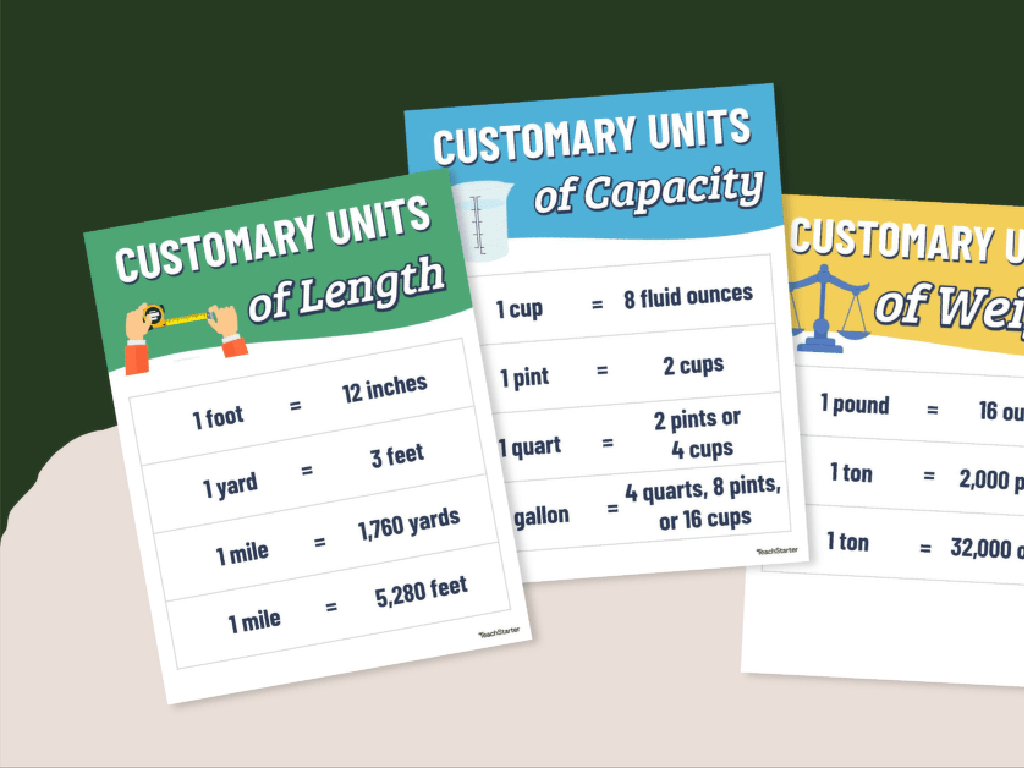Use Data To Describe Climates
Subject: Science
Grade: Seventh grade
Topic: Weather And Climate
Please LOG IN to download the presentation. Access is available to registered users only.
View More Content
Understanding Weather and Climate
– Define Climate
– Climate is the average weather in a place over many years.
– Climate vs. Weather
– Weather is day-to-day, climate is long-term patterns.
– Factors affecting Climate
– Temperature, precipitation, and wind patterns are key factors.
– Significance of Climate data
– Climate data helps predict future weather and plan for changes.
|
This slide introduces students to the fundamental concepts of weather and climate, emphasizing the difference between the two. Climate is the long-term average of weather patterns in an area, typically over 30 years. It’s important to distinguish this from weather, which is the short-term state of the atmosphere. Discuss the factors that influence climate, such as latitude, elevation, and proximity to water bodies. Highlight the importance of climate data in understanding long-term weather patterns, preparing for natural disasters, and addressing climate change. Encourage students to think about how the climate in their region might differ from other parts of the world and why that is the case.
Understanding Climate
– Climate vs. Weather
– Climate is long-term, weather is day-to-day conditions
– Climate Elements
– Patterns of temperature, precipitation, humidity, and wind
– Climate Zone Categories
– Polar, Temperate, and Tropical zones
– Climate Data Usage
– Scientists use data to analyze and predict climate patterns
|
This slide introduces the concept of climate and how it differs from daily weather patterns. Climate is the average of weather over a long period, typically 30 years, including temperature, precipitation, humidity, and wind. The three main climate zones are Polar, Temperate, and Tropical, each with distinct characteristics. Understanding climate involves looking at long-term data to identify patterns and make predictions. It’s crucial for students to grasp that climate is a broader term than weather, and it’s determined by analyzing data collected over many years. Encourage students to think about the climate in their own region and how it fits into these categories.
Understanding Climate Through Data
– Collecting climate data
– Scientists use tools like satellites, weather stations, and buoys to gather data.
– Types of climate data
– Data includes temperature, rainfall, and wind patterns.
– Interpreting climate graphs
– Graphs show trends and help predict future climate scenarios.
– Importance of climate data
|
This slide introduces students to the empirical aspect of climatology. It’s crucial for students to understand that climate data is meticulously collected using advanced technology and analyzed to study weather patterns over time. Emphasize the different types of data collected, such as temperature, rainfall, and wind patterns, and how each type contributes to our understanding of climate. Teach students how to read climate graphs, which visualize data and make it easier to identify trends and make predictions. Highlight the importance of this data in understanding global climate patterns and in making informed decisions related to weather preparedness and environmental policy.
Factors Affecting Climate
– Latitude’s role in climate
– Closer to Equator = warmer; poles = cooler.
– Ocean currents’ impact
– Warm currents heat, cold currents cool regions.
– Elevation and climate correlation
– Higher altitudes lead to cooler temperatures.
|
This slide aims to explain the major factors that influence climate patterns around the world. Latitude is crucial as it determines the amount of solar heat an area receives; areas near the equator are warmer due to direct sunlight, while polar regions are colder with indirect sunlight. Ocean currents act as regulators, with warm currents warming adjacent coastal areas and cold currents having a cooling effect. Elevation affects climate as temperatures drop with altitude due to changes in atmospheric pressure and density. Understanding these factors helps students grasp why different regions of the world experience distinct climates. Encourage students to think of examples of each factor and how it might affect the climate where they live or in places they know.
Exploring Climate Zones
– Overview of climate zones
– Tropical, Dry, Temperate, Continental, Polar
– Characteristics of each zone
– Temperature, precipitation, and seasonal patterns
– Locations exemplifying each zone
– Tropical: Amazon Rainforest, Dry: Sahara Desert, Temperate: Southern California, Continental: Central Russia, Polar: Antarctica
– Climate data and zone correlation
|
This slide introduces students to the five main climate zones and their characteristics. Each zone has distinct temperature ranges, precipitation levels, and seasonal changes. For instance, tropical zones are typically warm and receive significant rainfall, while polar zones are cold year-round. Provide examples of locations for each climate zone to help students connect these abstract concepts with real-world places. Discuss how climate data, such as temperature and rainfall records, are used to categorize different regions into these zones. Encourage students to think about the climate zone they live in and how it compares to others around the world.
Understanding Climate Change
– Define Climate Change
– Long-term alteration of temperature and typical weather patterns in a place.
– Human impact on climate
– Activities like burning fossil fuels increase greenhouse gases.
– Sustainable practices
– Practices that do not deplete resources or harm the environment.
– Why sustainability matters
– To ensure the health of our planet for future generations.
|
This slide aims to introduce students to the concept of climate change, emphasizing the role humans play in this global issue and the significance of adopting sustainable practices. Begin by defining climate change as a long-term change in the Earth’s overall temperature with significant and lasting changes to the weather patterns. Discuss how human activities, particularly the burning of fossil fuels for energy, contribute to the accumulation of greenhouse gases in the atmosphere, leading to global warming. Highlight the importance of sustainable practices such as recycling, using renewable energy, and reducing waste to mitigate the impact on the climate. Stress the urgency of these actions to preserve the environment and ensure a livable planet for future generations. Encourage students to think of ways they can contribute to sustainability in their daily lives.
Analyzing Climate Data
– Understand local climate data
– Study temperature, precipitation, and seasonal changes in your area.
– Compare global climate variations
– How do climates differ between the equator and the poles?
– Predict future climate trends
– Use historical data to forecast future climate conditions.
– Impact of climate on ecosystems
– Explore how different climates affect local plant and animal life.
|
This slide aims to guide students through the process of analyzing climate data to gain a deeper understanding of weather patterns and climate variations. Students should look at local climate data, such as temperature ranges and rainfall, to understand the typical climate of their region. They should then compare these findings with climates in different parts of the world, noting the diversity. Encourage students to use historical climate data to identify trends and make predictions about future climate changes. Discuss the importance of climate on local ecosystems and how it affects biodiversity. This will help students appreciate the complexity of climate and its far-reaching impacts.
Class Activity: Climate Data Analysis
– Collect local climate data
– Construct a climate graph
– Use temperature and precipitation data to plot the graph
– Present your climate findings
– Explain your graph to the class, highlighting any trends or surprises
– Discuss climate patterns
– Compare with classmates and note differences
|
This activity is designed to engage students with hands-on experience in collecting and analyzing climate data. Students should gather local climate data, which could include temperature, precipitation, and wind patterns, from reliable sources such as weather stations or online databases. They will then create a climate graph, plotting the data to visualize trends over time. Encourage students to be creative with their graphs, using colors and labels for clarity. When presenting, students should explain their methodology, any patterns observed, and what those patterns might indicate about their local climate. As a teacher, facilitate a discussion post-presentations to compare findings and discuss larger climate patterns that may emerge. Possible variations of the activity could include comparing historical data with current data, analyzing data from different seasons, or even comparing data from different geographical locations if resources allow.





